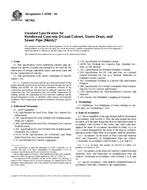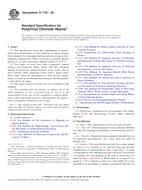1.1 This guide is intended to provide the reader with a knowledge of construction examination procedures and current technologies that can be used to give an owner or operator of an aboveground storage tank (AST) in petroleum service, relevant information on the hydraulic integrity of a new, repaired, or reconstructed tank bottom prior to return to service. This guide does not pertain to horizontal ASTs, manufacture of tanks using UL 142, or to tanks constructed of concrete or other non-ferrous materials.
1.2 The adoption of the mathods and technologies presented in this guide are not mandatory, rather they represent options that may be selected to identify the likelihood of product leaking through a new, repaired, or reconstructed tank bottom.
1.3 This guide is not intended to suggest or treat any technology in a preferential manner.
1.4 The person responsible for applying this guide should be a knowledgeable individual with experience in the design, inspection, construction, or combination thereof, of aboveground storage tanks for use in petroleum service, and should also be certified under the requirements of API 653 when use is related to tank bottom repair.
1.5 This guide is written in metric measure units (SI Units) in accordance with requirements of Practice E 621. English measure equivalents are in parentheses.
1.6 The applicability of this guide to the proposed tank configuration and service conditions should be established prior to use.
1.7 This guide complies with ASTM policy for development and subsequent use of a standard.
1.8 This guide is subject to revision at any time by the responsible technical committee and must be reviewed every five years and if not revised, either reapproved or withdrawn. Your comments are invited either for revision of this guide or for additional standards and should be addressed to ASTM International, 100 Barr Harbor Drive, W. Conshohocken, PA 19428.
1.9 This guide is not intended for use as a model code, ordinance or regulation.
1.10 This standard does not purport to address all of the safety concerns, if any, associated with its use. It is the responsibility of the user of this standard to establish appropriate safety and health practices and determine the applicability of regulatory requirements prior to use.
Product Details
- Published:
- 01/10/2003
- Number of Pages:
- 16
- File Size:
- 1 file , 250 KB


